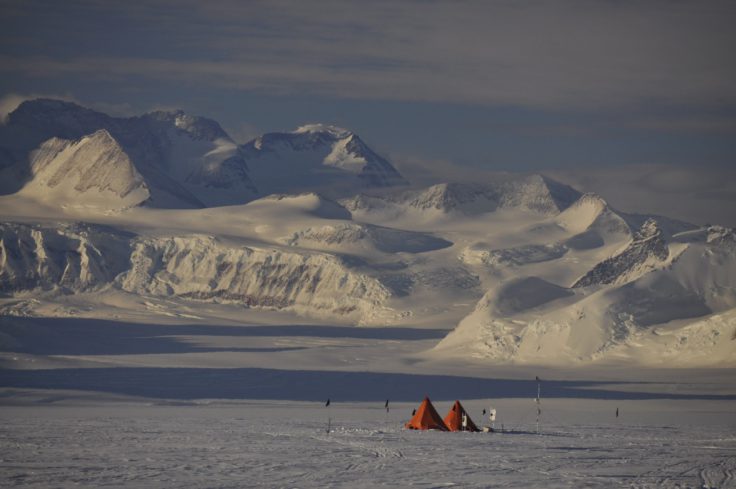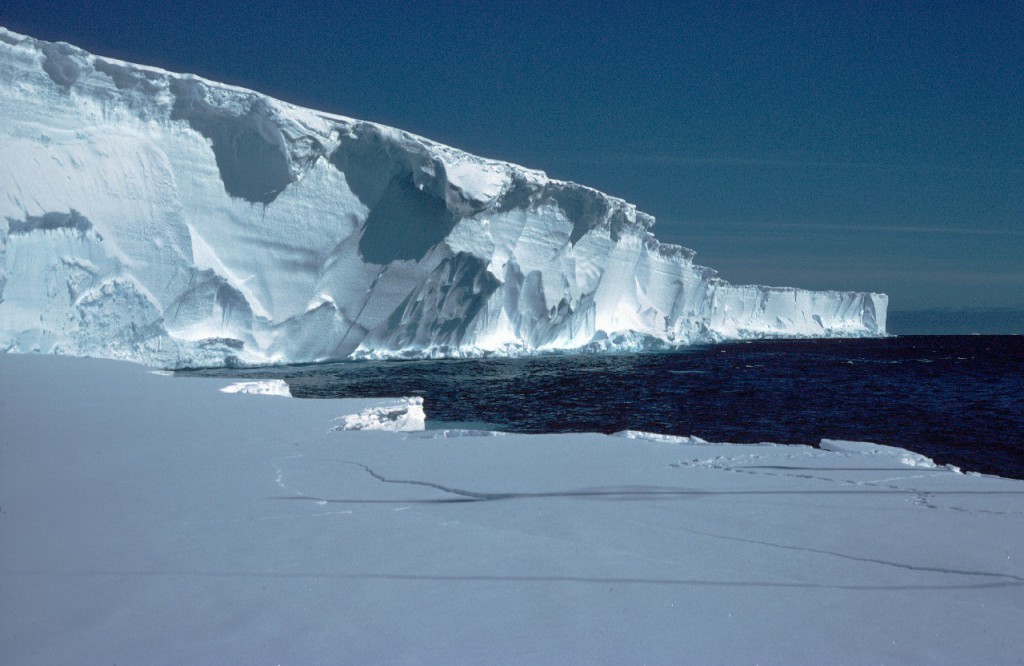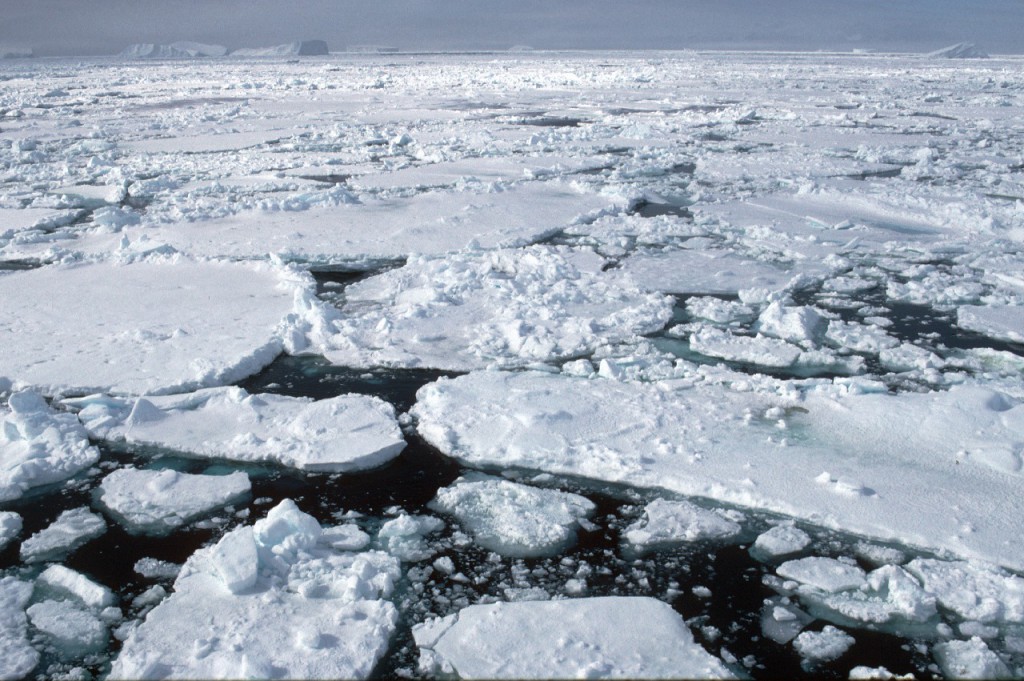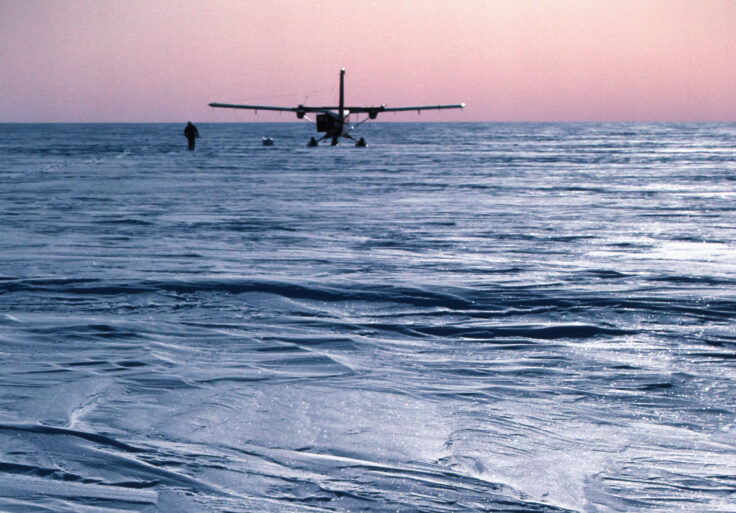The Polar Regions are covered by vast domes of ice. These high-latitude regions are colder than other places on Earth because they get less heat from the sun. The Arctic region is a frozen sea surrounded by land, while the Antarctic is a frozen continent surrounded by sea. The Antarctic ice sheet is the largest single mass of ice on Earth.
Ice sheets
The Antarctic Ice Sheet covers an area of almost 14 million km² and contains 30 million km³ of ice. Around 60% of the world’s total fresh water (90% of the world’s surface fresh water) is held in the ice sheet, equivalent to a 70m rise in global sea level. In East Antarctica the ice sheet rests on a major land mass, but in West Antarctica the bed is, in places, more than 2,500m below sea level.
Even in summer Antarctic temperatures are below 0°C and so frost and snow crystals that gather on the surface of the ice sheet do not melt, but accumulate year-by-year. As these crystals are buried the weight of the crystals above presses them together. Eventually, they are transformed into dense and impermeable glacial ice.
Although the surface is cold, the base of the ice sheet is generally warmer, in places it melts and the melt-water lubricates the ice sheet so that it flows more rapidly. This process produces fast-flowing channels in the ice sheet — these are ice streams.
Ice streams
Although they account for only 10% of the volume of the ice sheet, ice streams are sizeable features, up to 50km wide, 2,000m thick and hundreds of kilometres long. Some flow at speeds of over 1,000m per year and most of the ice leaving the ice sheet passes though them.

Ice streams generally form where water is present beneath the ice, but other factors also control their velocity, in particular whether the ice stream rests on hard rock or soft sediments. At the edges of ice streams deformation causes ice to recrystallise making it softer and concentrating the deformation into narrow bands or shear margins. Crevasses (cracks in the ice) result from rapid deformation and are common in shear margins.
Ice shelves
Ice is less dense than water and because near the coast ice sheets generally rest on a rock bed below sea level, there comes a point where it begins to float. The ice either stays attached to the ice sheet as an ice shelf, or breaks away as an iceberg. Being afloat, ice shelves experience no friction under them, so they tend to flow even more rapidly than ice streams, up to 3km per year. Much of Antarctica is fringed by ice shelves. Ross and Ronne-Filchner ice shelves each have areas greater than the British Isles.

Across the base of ice shelves, sea water and ice come into contact. Where this sea water is warm enough, the ice shelf will melt, adding cold fresh water to the sea. This diluted seawater eventually helps to form a water mass called Antarctic Bottom Water which is present in many of the deepest parts of the Southern Ocean.
Eventually, ice breaks off the ice shelves to form icebergs. Ice shelves may be sensitive indicators of climate change and several major ice shelves in the Antarctic Peninsula region have collapsed in recent decades.
Sea ice
Beyond the ice shelves is the sea. When the sea freezes it forms a salty type of ice, sea ice. The area covered by sea ice varies with the seasons, around 3 million km² in February, around 20 million km² in October. So much of the sea freezes around the continent that in winter, Antarctica almost doubles in size.

Although usually only a few metres thick, sea ice insulates the sea and limits the amount of sunlight reaching it. Lack of light limits growth of phytoplankton in the sea, though algae do multiply in the sea ice itself, sometimes turning it brown. The insulation effect reduces heat transfer between ocean and atmosphere, keeping the air cold and dry. Finally, as sea ice melts it cools both ocean and atmosphere. Because it limits energy transfer, the extent of sea ice is critical to the climate of the Southern Ocean.

